Volume ,2025 Issue 5
Indexed by
- Featured Articles
- Recommended Topics
-
- New Progress in Helicopter Rotor Wake Research
- An Adaptive Transmission Scheme for Deep Space Communication
- An Efficient Method for Local Buckling Analysis of Stiffened Panels
- Damage Detection and Material Property Reconstruction of Composite Laminates Using Laser Ultrasonic Technique
- Optimization Algorithm of UWB Positioning for Aircraft Assembly Workshop
-
- Flow Characteristics of Double-Cruciform Parachute at Inflating and Inflated Conditions
- Optimization of Nonlinear Energy Sink for Vibration Suppression of Systems Under Dual-Frequency Excitation
- Development of a Synchronization Method for Fluid-Thermal Study of Hypersonic Flow
- Experimental Investigation on Convective Heat Transfer Characteristics in Ribbed Channel
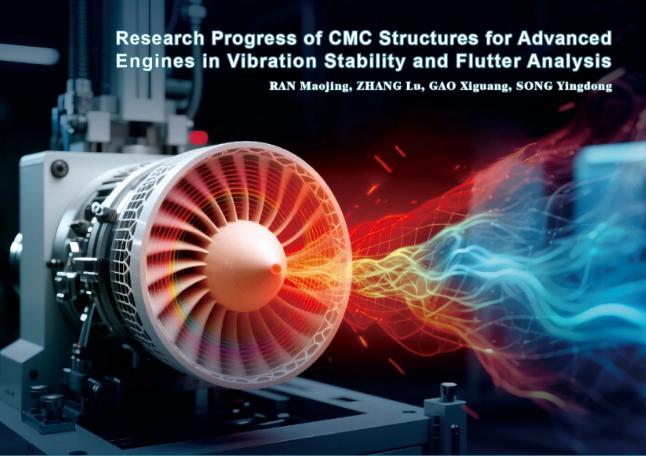 Cover Paper in Issue 4,2025
Cover Paper in Issue 4,2025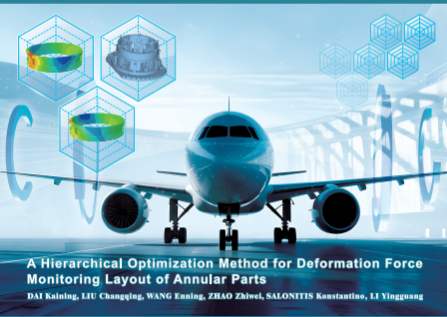 Cover Paper in Issue 3,2025
Cover Paper in Issue 3,2025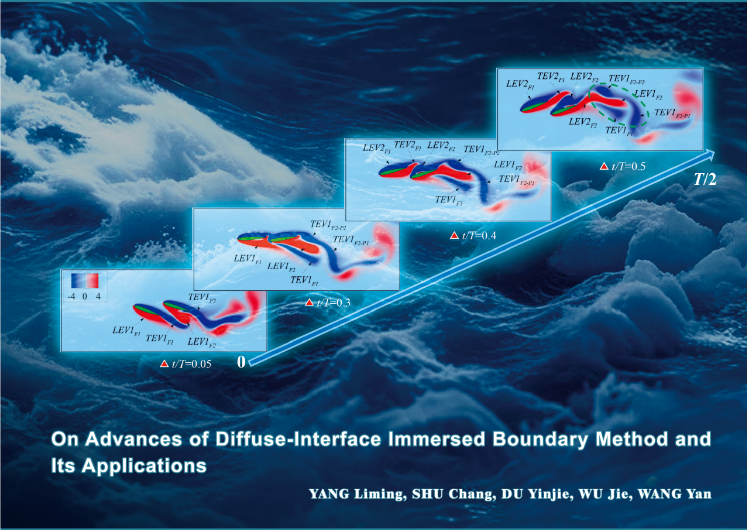 Cover Paper in Issue 2,2025
Cover Paper in Issue 2,2025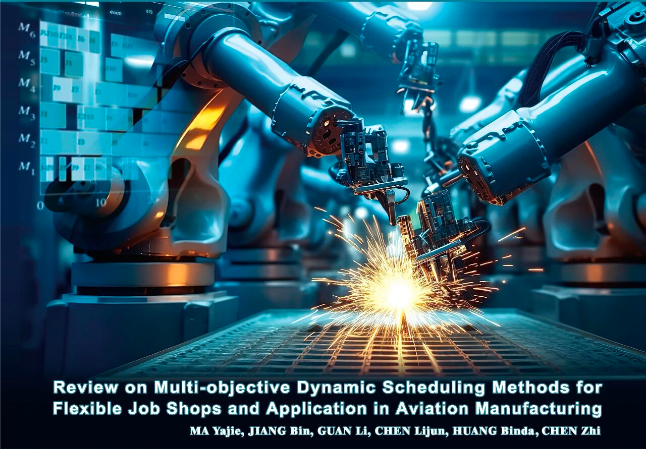 Cover Paper in Issue 1,2025
Cover Paper in Issue 1,2025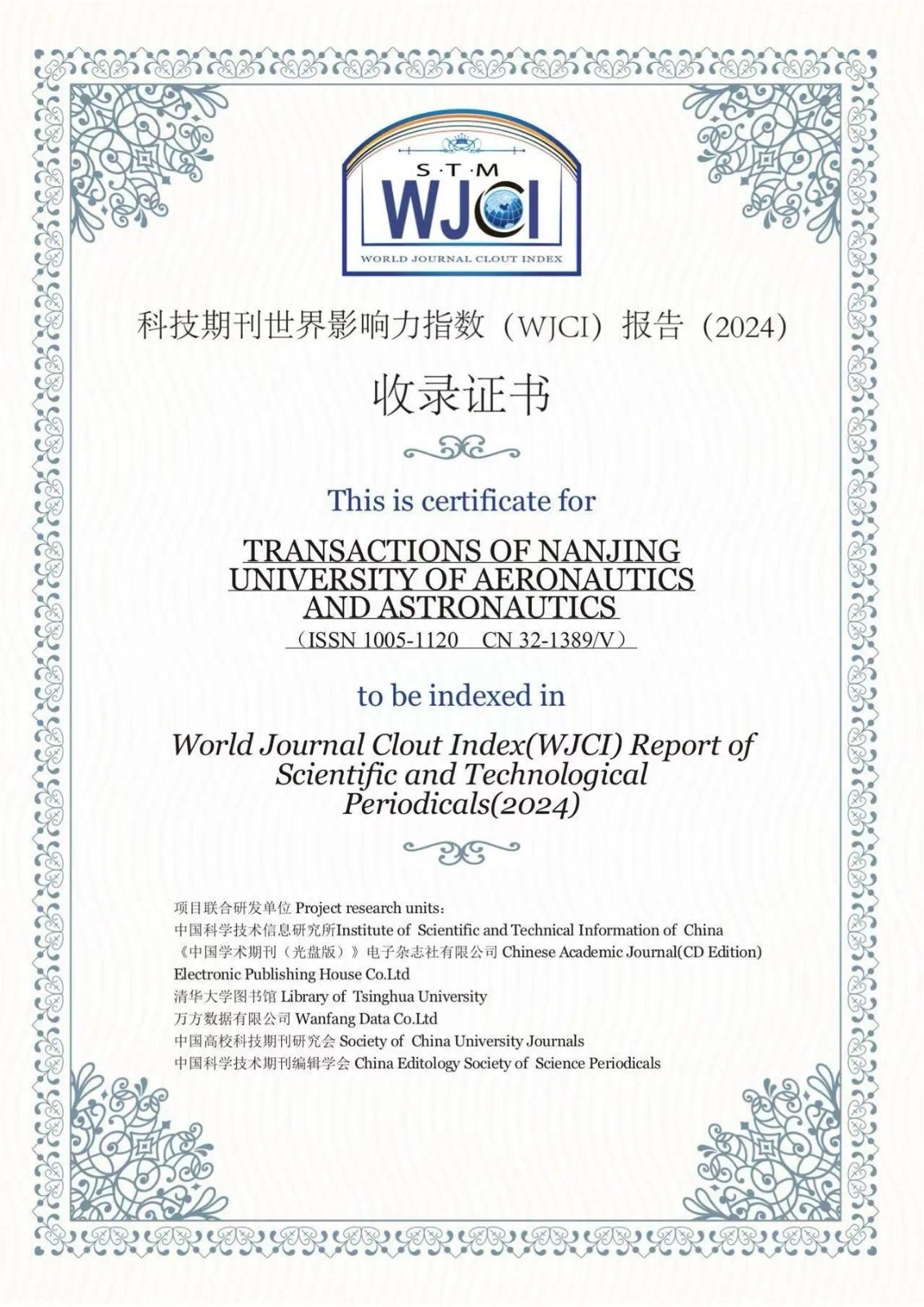 TNUAA is indexed in "WJCI Report of Scientific and Technological Periodicals(2024)"
TNUAA is indexed in "WJCI Report of Scientific and Technological Periodicals(2024)" 2024 Acknowledgements to Reviewers
2024 Acknowledgements to Reviewers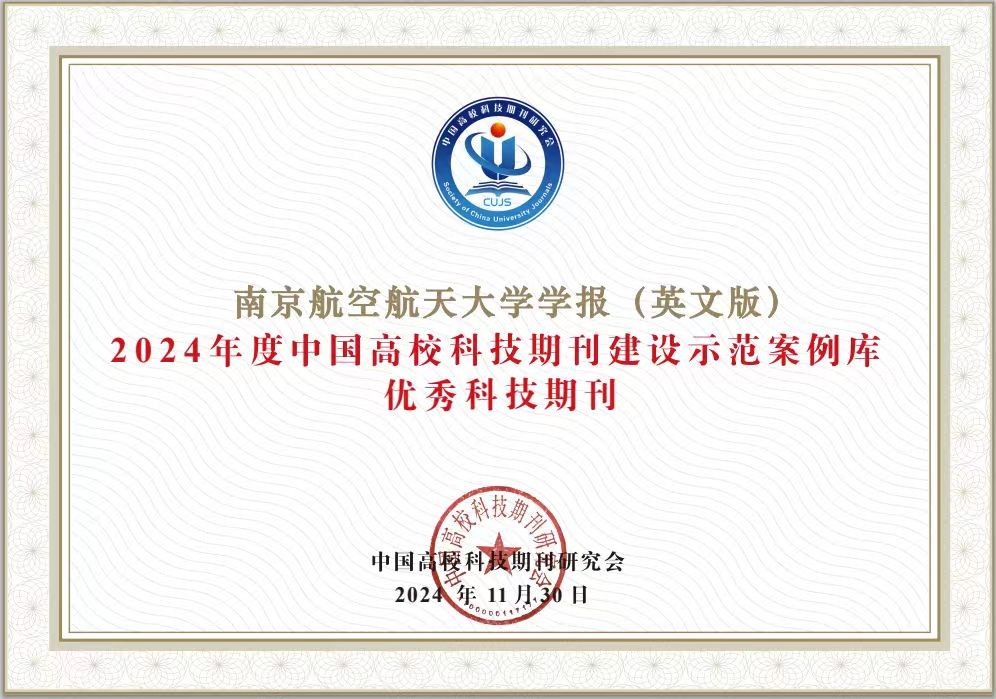 TNUAA was awarded as an Excellent Scientific and Technological Journal in Chinese Universities in 2024
TNUAA was awarded as an Excellent Scientific and Technological Journal in Chinese Universities in 2024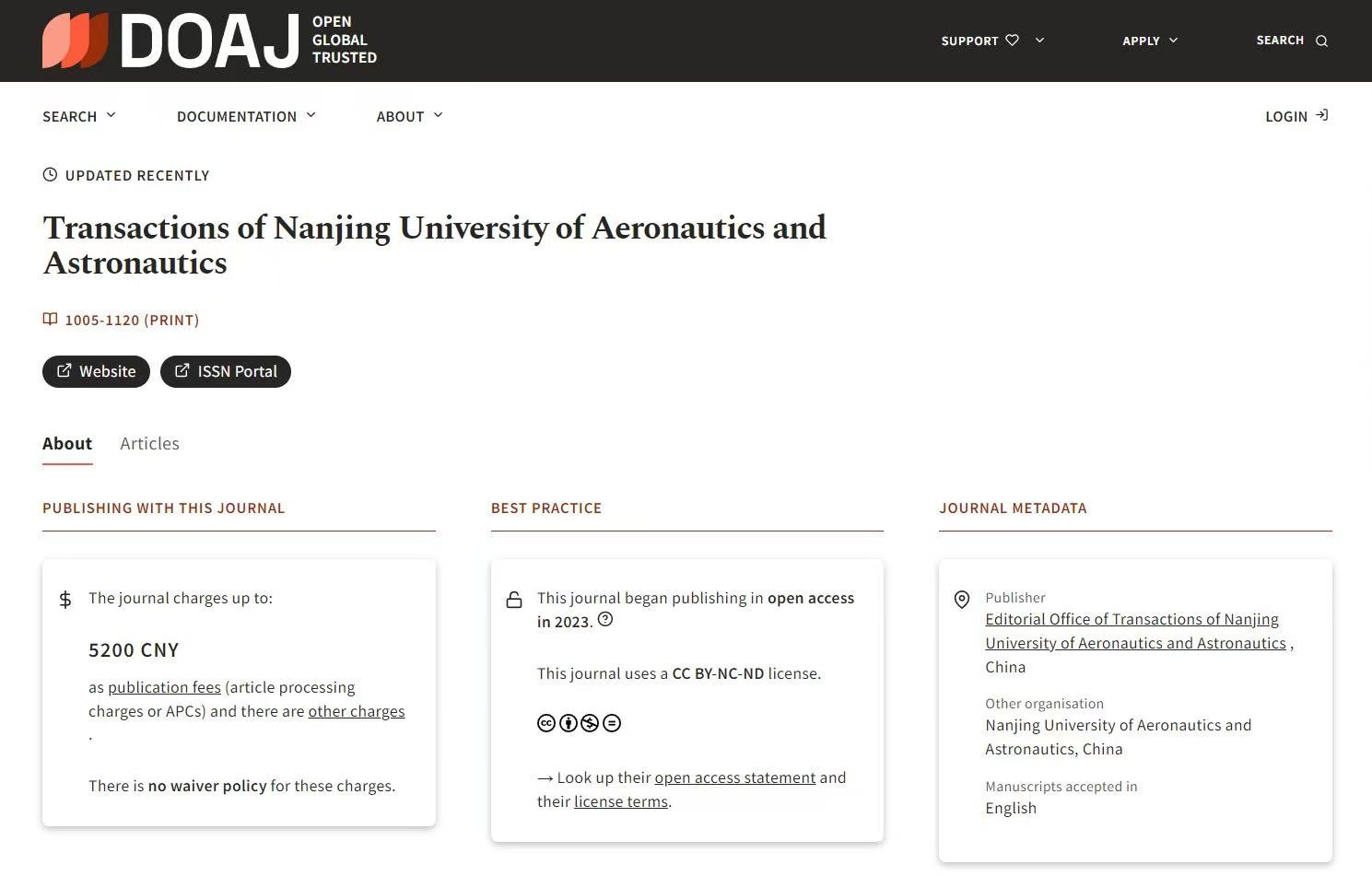 TNUAA is indexed by the DOAJ dataset
TNUAA is indexed by the DOAJ dataset
- Current Issue
- Online First
- Archive
- Most Downloaded
Select AllDeselectExport
Display Method:
2025(5):565-576, DOI: 10.16356/j.1005-1120.2025.05.001
Abstract:
Intelligent interpretation of high-resolution remote sensing imagery is a fundamental challenge in aerospace information processing. Complex ground environments such as construction and demolition (C&D) waste landfills exemplify the need for robust segmentation models that can handle diverse spatial and spectral patterns. Conventional convolutional neural networks (CNNs) are limited by their local receptive fields, whereas Transformer-based architectures often lose fine spatial detail, resulting in incomplete delineation of heterogeneous remote sensing targets. To address these issues, we propose a global-local collaborative network (GLC-Net), which is designed for intelligent remote sensing image segmentation. The model integrates an efficient Transformer block to capture global dependencies and a local enhancement block to refine structural details. Furthermore, a multi-scale spatial aggregation and enhancement (MSAE) module is introduced to strengthen contextual representation and suppress background noise. Deep supervision facilitates hierarchical feature learning. Experiments on two high-resolution remote sensing datasets (Changping and Daxing) demonstrate that GLC-Net surpasses state-of-the-art baselines by 1.5%—3.2% in mean intersection over union (mIoU), while achieving superior boundary precision and semantic consistency. These results confirm that global-local collaborative modeling provides an effective pathway for intelligent remote sensing image segmentation in aerospace environmental monitoring.
Intelligent interpretation of high-resolution remote sensing imagery is a fundamental challenge in aerospace information processing. Complex ground environments such as construction and demolition (C&D) waste landfills exemplify the need for robust segmentation models that can handle diverse spatial and spectral patterns. Conventional convolutional neural networks (CNNs) are limited by their local receptive fields, whereas Transformer-based architectures often lose fine spatial detail, resulting in incomplete delineation of heterogeneous remote sensing targets. To address these issues, we propose a global-local collaborative network (GLC-Net), which is designed for intelligent remote sensing image segmentation. The model integrates an efficient Transformer block to capture global dependencies and a local enhancement block to refine structural details. Furthermore, a multi-scale spatial aggregation and enhancement (MSAE) module is introduced to strengthen contextual representation and suppress background noise. Deep supervision facilitates hierarchical feature learning. Experiments on two high-resolution remote sensing datasets (Changping and Daxing) demonstrate that GLC-Net surpasses state-of-the-art baselines by 1.5%—3.2% in mean intersection over union (mIoU), while achieving superior boundary precision and semantic consistency. These results confirm that global-local collaborative modeling provides an effective pathway for intelligent remote sensing image segmentation in aerospace environmental monitoring.
2025(5):577-588, DOI: 10.16356/j.1005-1120.2025.05.002
Abstract:
High-resolution sub-meter satellite data play an increasingly crucial role in the 3D real-scene China construction initiative. Current research on 3D reconstruction using high-resolution satellite data primarily focuses on two approaches: Multi-stereo fusion and multi-view matching. While algorithms based on these two methodologies for multi-view image 3D reconstruction have reached relative maturity, no systematic comparison has been conducted specifically on satellite data to evaluate the relative merits of multi-stereo fusion versus multi-view matching methods. This paper conducts a comparative analysis of the practical accuracy of both approaches using high-resolution satellite datasets from diverse geographical regions. To ensure fairness in accuracy comparison, both methodologies employ non-local dense matching for cost optimization. Results demonstrate that the multi-stereo fusion method outperforms multi-view matching in all evaluation metrics, exhibiting approximately 1.2% higher average matching accuracy and 10.7% superior elevation precision in the experimental datasets. Therefore, for 3D modeling applications using satellite data, we recommend adopting the multi-stereo fusion approach for digital surface model (DSM) product generation.
High-resolution sub-meter satellite data play an increasingly crucial role in the 3D real-scene China construction initiative. Current research on 3D reconstruction using high-resolution satellite data primarily focuses on two approaches: Multi-stereo fusion and multi-view matching. While algorithms based on these two methodologies for multi-view image 3D reconstruction have reached relative maturity, no systematic comparison has been conducted specifically on satellite data to evaluate the relative merits of multi-stereo fusion versus multi-view matching methods. This paper conducts a comparative analysis of the practical accuracy of both approaches using high-resolution satellite datasets from diverse geographical regions. To ensure fairness in accuracy comparison, both methodologies employ non-local dense matching for cost optimization. Results demonstrate that the multi-stereo fusion method outperforms multi-view matching in all evaluation metrics, exhibiting approximately 1.2% higher average matching accuracy and 10.7% superior elevation precision in the experimental datasets. Therefore, for 3D modeling applications using satellite data, we recommend adopting the multi-stereo fusion approach for digital surface model (DSM) product generation.
2025(5):589-600, DOI: 10.16356/j.1005-1120.2025.05.003
Abstract:
In remote sensing imagery, approximately 67% of the data are affected by cloud cover, significantly increasing the difficulty of image classification, recognition, and other downstream interpretation tasks. To effectively address the randomness of cloud distribution and the non-uniformity of cloud thickness, we propose a coarse-to-fine thin cloud removal architecture based on the observations of the random distribution and uneven thickness of cloud. In the coarse-level declouding network, we innovatively introduce a multi-scale attention mechanism, i.e., pyramid non-local attention (PNA). By integrating global context with local detail information, it specifically addresses image quality degradation caused by the uncertainty in cloud distribution. During the fine-level declouding stage, we focus on the impact of cloud thickness on declouding results (primarily manifested as insufficient detail information). Through a carefully designed residual dense module, we significantly enhance the extraction and utilization of feature details. Thus, our approach precisely restores lost local texture features on top of coarse-level results, achieving a substantial leap in declouding quality. To evaluate the effectiveness of our cloud removal technology and attention mechanism, we conducted comprehensive analyses on publicly available datasets. Results demonstrate that our method achieves state-of-the-art performance across a wide range of techniques.
In remote sensing imagery, approximately 67% of the data are affected by cloud cover, significantly increasing the difficulty of image classification, recognition, and other downstream interpretation tasks. To effectively address the randomness of cloud distribution and the non-uniformity of cloud thickness, we propose a coarse-to-fine thin cloud removal architecture based on the observations of the random distribution and uneven thickness of cloud. In the coarse-level declouding network, we innovatively introduce a multi-scale attention mechanism, i.e., pyramid non-local attention (PNA). By integrating global context with local detail information, it specifically addresses image quality degradation caused by the uncertainty in cloud distribution. During the fine-level declouding stage, we focus on the impact of cloud thickness on declouding results (primarily manifested as insufficient detail information). Through a carefully designed residual dense module, we significantly enhance the extraction and utilization of feature details. Thus, our approach precisely restores lost local texture features on top of coarse-level results, achieving a substantial leap in declouding quality. To evaluate the effectiveness of our cloud removal technology and attention mechanism, we conducted comprehensive analyses on publicly available datasets. Results demonstrate that our method achieves state-of-the-art performance across a wide range of techniques.
2025(5):601-614, DOI: 10.16356/j.1005-1120.2025.05.004
Abstract:
The advancement of imaging resolution has made the impact of multi-frequency composite jitter in satellite platforms on non-collinear time delay and integration (TDI) charge-coupled device (CCD) imaging systems increasingly critical. Moreover, the accuracy of jitter detection is constrained by the limited inter-chip overlap region inherent to non-collinear TDI CCDs. To address these challenges, a multi-frequency jitter detection method is proposed, achieving sub-pixel level error extraction. Furthermore, a multi-frequency jitter fitting approach utilizing a scale-adjustable sliding window is introduced. For composite multi-frequency jitter, spectral analysis decomposes the relative jitter error curve, while the scale-adjustable sliding window enables frequency-division fitting and modeling. Validation experiments using Gaofen-8 (GF-8) remote sensing satellite imagery detected jitter at 0.65, 20, and 100 Hz in the cross-track direction and at 0.5, 100, and 120 Hz in the along-track direction, demonstrating the method’s precision in detecting platform jitter at sub-pixel accuracy (<0.2 pixels) and its efficacy in fitting and modeling for non-collinear TDI CCD imaging systems subject to multi-frequency jitter.
The advancement of imaging resolution has made the impact of multi-frequency composite jitter in satellite platforms on non-collinear time delay and integration (TDI) charge-coupled device (CCD) imaging systems increasingly critical. Moreover, the accuracy of jitter detection is constrained by the limited inter-chip overlap region inherent to non-collinear TDI CCDs. To address these challenges, a multi-frequency jitter detection method is proposed, achieving sub-pixel level error extraction. Furthermore, a multi-frequency jitter fitting approach utilizing a scale-adjustable sliding window is introduced. For composite multi-frequency jitter, spectral analysis decomposes the relative jitter error curve, while the scale-adjustable sliding window enables frequency-division fitting and modeling. Validation experiments using Gaofen-8 (GF-8) remote sensing satellite imagery detected jitter at 0.65, 20, and 100 Hz in the cross-track direction and at 0.5, 100, and 120 Hz in the along-track direction, demonstrating the method’s precision in detecting platform jitter at sub-pixel accuracy (<0.2 pixels) and its efficacy in fitting and modeling for non-collinear TDI CCD imaging systems subject to multi-frequency jitter.
2025(5):615-628, DOI: 10.16356/j.1005-1120.2025.05.005
Abstract:
Conventional adaptive filtering algorithms often exhibit performance degradation when processing multipath interference in raw echoes of spaceborne synthetic aperture radar (SAR) systems due to anomalous outliers, manifesting as insufficient convergence and low estimation accuracy. To address this issue, this study proposes a novel robust adaptive filtering algorithm, namely the M-estimation-based minimum error entropy with affine projection (APMMEE) algorithm. This algorithm inherits the joint multi-data-block update mechanism of the affine projection algorithm, enabling rapid adaptation to the dynamic characteristics of raw echoes and achieving fast convergence. Meanwhile, it incorporates the M-estimation-based minimum error entropy (MMEE) criterion, which weights error samples in raw echoes through M-estimation functions, effectively suppressing outlier interference during the algorithm update. Both the system identification simulations and practical multipath interference suppression experiments using raw echoes demonstrate that the proposed APMMEE algorithm exhibits superior filtering performance.
Conventional adaptive filtering algorithms often exhibit performance degradation when processing multipath interference in raw echoes of spaceborne synthetic aperture radar (SAR) systems due to anomalous outliers, manifesting as insufficient convergence and low estimation accuracy. To address this issue, this study proposes a novel robust adaptive filtering algorithm, namely the M-estimation-based minimum error entropy with affine projection (APMMEE) algorithm. This algorithm inherits the joint multi-data-block update mechanism of the affine projection algorithm, enabling rapid adaptation to the dynamic characteristics of raw echoes and achieving fast convergence. Meanwhile, it incorporates the M-estimation-based minimum error entropy (MMEE) criterion, which weights error samples in raw echoes through M-estimation functions, effectively suppressing outlier interference during the algorithm update. Both the system identification simulations and practical multipath interference suppression experiments using raw echoes demonstrate that the proposed APMMEE algorithm exhibits superior filtering performance.
2025(5):629-637, DOI: 10.16356/j.1005-1120.2025.05.006
Abstract:
A new electrical toothed band brake is proposed based on the planetary gear shifting transmission. The corresponding mathematical model and the finite element model are established to investigate the braking dynamic characteristics and the stress distribution of brake components. According to the structural features and working principle of the brake, the braking process can be divided into a gap elimination stage, a sliding stage, a meshing stage, and a collision stage. The greater the initial speed of brake drum, the higher the impact torque in the collision stage, and the larger the stress of brake components. The ideal range of initial speed is 50—100 r/min, and the ultimate stress is 514 MPa appeared in the right brake band. This study present a wide range of possibilities for further investigation and application of the electrical toothed band brake.
A new electrical toothed band brake is proposed based on the planetary gear shifting transmission. The corresponding mathematical model and the finite element model are established to investigate the braking dynamic characteristics and the stress distribution of brake components. According to the structural features and working principle of the brake, the braking process can be divided into a gap elimination stage, a sliding stage, a meshing stage, and a collision stage. The greater the initial speed of brake drum, the higher the impact torque in the collision stage, and the larger the stress of brake components. The ideal range of initial speed is 50—100 r/min, and the ultimate stress is 514 MPa appeared in the right brake band. This study present a wide range of possibilities for further investigation and application of the electrical toothed band brake.
2025(5):638-647, DOI: 10.16356/j.1005-1120.2025.05.007
Abstract:
The conventional feedforward hybrid active noise control (FFHANC) system combines the advantages of the feedforward narrowband active noise control (FFNANC) system and the feedforward broadband active noise control (FFBANC) system. To enhance its adaptive adjustment capability under frequency mismatch (FM) conditions, this paper introduces a narrowband frequency adaptive estimation module into the conventional FFHANC system. This module integrates an autoregressive (AR) model and a linear cascaded adaptive notch filter (LCANF), enabling accurate reference signal frequency estimation even under significant FM. Furthermore, in order to improve the coherence between narrowband and broadband components in the system’s error signal and its corresponding control filter for the conventional FFHANC system, this paper proposes an algorithm based on autoregressive bandpass filter bank (AR-BPFB) for error separation. Simulation results demonstrate that the proposed FFHANC system maintains robust performance under high FM conditions and effectively suppresses hybrid-band noise. The AR-BPFB algorithm significantly elevates the convergence speed of the FFHANC system.
The conventional feedforward hybrid active noise control (FFHANC) system combines the advantages of the feedforward narrowband active noise control (FFNANC) system and the feedforward broadband active noise control (FFBANC) system. To enhance its adaptive adjustment capability under frequency mismatch (FM) conditions, this paper introduces a narrowband frequency adaptive estimation module into the conventional FFHANC system. This module integrates an autoregressive (AR) model and a linear cascaded adaptive notch filter (LCANF), enabling accurate reference signal frequency estimation even under significant FM. Furthermore, in order to improve the coherence between narrowband and broadband components in the system’s error signal and its corresponding control filter for the conventional FFHANC system, this paper proposes an algorithm based on autoregressive bandpass filter bank (AR-BPFB) for error separation. Simulation results demonstrate that the proposed FFHANC system maintains robust performance under high FM conditions and effectively suppresses hybrid-band noise. The AR-BPFB algorithm significantly elevates the convergence speed of the FFHANC system.
2025(5):648-658, DOI: 10.16356/j.1005-1120.2025.05.008
Abstract:
In order to explore the opening force variation rules and influencing factors of parafoil opening process, a dynamic model for parafoil opening process is established in this paper. The performance of the parafoil opening process is calculated using the Runge-Kutta method. The calculation results are consistent with the patterns of the existing literatures, showing a maximum opening force error of 4.8%. Based on this, simulations are conducted for 20 different operating conditions of the parafoil system, and the rules governing the changes in system motion speed and parafoil opening force are obtained. The influence of the parafoil parameters and opening conditions on the opening force is also investigated. The results indicate that the opening force is positively correlated with the load mass, the opening speed, and trajectory angle, while it is negatively correlated with the opening height. The peak time of the opening force is affected by aerodynamic force and decelerating inertia force. As the weight and the opening height increase, the system deceleration becomes slower, and the peak time of the opening force is delayed. The aerodynamic force increases with the canopy area and the opening speed, leading to an advancement in the peak time of the opening force. Finally, the Sobol global sensitivity analysis method is employed to obtain the first-order sensitivity and total sensitivity coefficients of the parafoil parameters and opening conditions on parafoil maximum opening force. The results show that the opening speed and the load mass significantly affect the maximum opening force. The first-order sensitivity coefficients of 0.410 7 and 0.313 6, respectively; and the total sensitivity coefficients of 0.477 5 and 0.375 2, respectively. The sensitivity of the canopy area is at a moderate level, with the first-order and total sensitivity coefficients of 0.074 9 and 0.085 1,respectively. The sensitivity coefficients for the opening height and the opening angle are close to zero, indicating that fluctuations in their values have little effect on the maximum opening force.
In order to explore the opening force variation rules and influencing factors of parafoil opening process, a dynamic model for parafoil opening process is established in this paper. The performance of the parafoil opening process is calculated using the Runge-Kutta method. The calculation results are consistent with the patterns of the existing literatures, showing a maximum opening force error of 4.8%. Based on this, simulations are conducted for 20 different operating conditions of the parafoil system, and the rules governing the changes in system motion speed and parafoil opening force are obtained. The influence of the parafoil parameters and opening conditions on the opening force is also investigated. The results indicate that the opening force is positively correlated with the load mass, the opening speed, and trajectory angle, while it is negatively correlated with the opening height. The peak time of the opening force is affected by aerodynamic force and decelerating inertia force. As the weight and the opening height increase, the system deceleration becomes slower, and the peak time of the opening force is delayed. The aerodynamic force increases with the canopy area and the opening speed, leading to an advancement in the peak time of the opening force. Finally, the Sobol global sensitivity analysis method is employed to obtain the first-order sensitivity and total sensitivity coefficients of the parafoil parameters and opening conditions on parafoil maximum opening force. The results show that the opening speed and the load mass significantly affect the maximum opening force. The first-order sensitivity coefficients of 0.410 7 and 0.313 6, respectively; and the total sensitivity coefficients of 0.477 5 and 0.375 2, respectively. The sensitivity of the canopy area is at a moderate level, with the first-order and total sensitivity coefficients of 0.074 9 and 0.085 1,respectively. The sensitivity coefficients for the opening height and the opening angle are close to zero, indicating that fluctuations in their values have little effect on the maximum opening force.
2025(5):659-678, DOI: 10.16356/j.1005-1120.2025.05.009
Abstract:
During aircraft ground steering, the nose landing gear (NLG) tires of large transport aircraft often experience excessive lateral loads, leading to sideslip. This compromises steering safety and accelerates tire wear. To address this issue, the rear landing gear is typically designed to steer in coordination with the nose wheels, reducing sideslip and improving maneuverability. This study examines how structural parameters and weight distribution affect the performance of coordinated steering in landing gear design for large transport aircraft. Using the C-5 transport aircraft as a case study, we develop a multi-wheel ground steering dynamics model, incorporating the main landing gear (MLG) deflection. A ground handling dynamics model is also established to evaluate the benefits of coordinated steering for rear MLG during steering. Additionally, the study analyzes the impact of structural parameters such as stiffness and damping on the steering performance of the C-5. It further investigates the effects of weight distribution, including the center-of-gravity (CG) height, the longitudinal CG position, and the mass asymmetry. Results show that when the C-5 employs coordinated steering for rear MLG, the lateral friction coefficients of the NLG tires decrease by 22%, 24%, 26%, and 27%. The steering radius is reduced by 29.7%, and the NLG steering moment decreases by 19%, significantly enhancing maneuverability. Therefore, in the design of landing gear for large transport aircraft, coordinated MLG steering, along with optimal structural and CG position parameters, should be primary design objectives. These results provide theoretical guidance for the design of multi-wheel landing gear systems in large transport aircraft.
During aircraft ground steering, the nose landing gear (NLG) tires of large transport aircraft often experience excessive lateral loads, leading to sideslip. This compromises steering safety and accelerates tire wear. To address this issue, the rear landing gear is typically designed to steer in coordination with the nose wheels, reducing sideslip and improving maneuverability. This study examines how structural parameters and weight distribution affect the performance of coordinated steering in landing gear design for large transport aircraft. Using the C-5 transport aircraft as a case study, we develop a multi-wheel ground steering dynamics model, incorporating the main landing gear (MLG) deflection. A ground handling dynamics model is also established to evaluate the benefits of coordinated steering for rear MLG during steering. Additionally, the study analyzes the impact of structural parameters such as stiffness and damping on the steering performance of the C-5. It further investigates the effects of weight distribution, including the center-of-gravity (CG) height, the longitudinal CG position, and the mass asymmetry. Results show that when the C-5 employs coordinated steering for rear MLG, the lateral friction coefficients of the NLG tires decrease by 22%, 24%, 26%, and 27%. The steering radius is reduced by 29.7%, and the NLG steering moment decreases by 19%, significantly enhancing maneuverability. Therefore, in the design of landing gear for large transport aircraft, coordinated MLG steering, along with optimal structural and CG position parameters, should be primary design objectives. These results provide theoretical guidance for the design of multi-wheel landing gear systems in large transport aircraft.
2025(5):679-692, DOI: 10.16356/j.1005-1120.2025.05.010
Abstract:
The icing of areo-engine inlet components during flight can affect engine operational safety. Conventional hot-air anti-icing systems require a large amount of bleed air, which compromises engine performance. Consequently, low-energy anti/de-icing methods based on superhydrophobic surfaces have attracted widespread attention. Previous studies have demonstrated that for stationary components, superhydrophobic surfaces can significantly reduce anti-icing energy consumption by altering the flow behavior of runback water. However, for rotating inlet components of aero-engines, the effectiveness of superhydrophobic surfaces and the influence of surface wettability on the evolution of runback water flow remain unclear due to the effects of centrifugal and Coriolis forces. This study establishes a 3D liquid water flow simulation model using the volume of fluid (VOF) method to investigate the effects of rotational speed, airflow velocity, and surface wettability on the runback water flow behavior over the rotating spinner under dynamic rotation conditions. The results show that the rotational effects and surface wettability mutually reinforce one another. Specifically, increasing the rotational speed and contact angle can both enhance the flow velocity of liquid water and accelerate the breakup and rupture of liquid film, leading to the formation of rivulets, droplets, and subsequent detachment from the surface. A theoretical model based on force balance is proposed to describe the evolution of runback water flow, and the analysis reveals that as the rotational speed and contact angle increase, the water film is more likely to break up to form rivulets and beads, and the critical radius for droplet detachment from the surface decreases, making it easier removal from the surface.
The icing of areo-engine inlet components during flight can affect engine operational safety. Conventional hot-air anti-icing systems require a large amount of bleed air, which compromises engine performance. Consequently, low-energy anti/de-icing methods based on superhydrophobic surfaces have attracted widespread attention. Previous studies have demonstrated that for stationary components, superhydrophobic surfaces can significantly reduce anti-icing energy consumption by altering the flow behavior of runback water. However, for rotating inlet components of aero-engines, the effectiveness of superhydrophobic surfaces and the influence of surface wettability on the evolution of runback water flow remain unclear due to the effects of centrifugal and Coriolis forces. This study establishes a 3D liquid water flow simulation model using the volume of fluid (VOF) method to investigate the effects of rotational speed, airflow velocity, and surface wettability on the runback water flow behavior over the rotating spinner under dynamic rotation conditions. The results show that the rotational effects and surface wettability mutually reinforce one another. Specifically, increasing the rotational speed and contact angle can both enhance the flow velocity of liquid water and accelerate the breakup and rupture of liquid film, leading to the formation of rivulets, droplets, and subsequent detachment from the surface. A theoretical model based on force balance is proposed to describe the evolution of runback water flow, and the analysis reveals that as the rotational speed and contact angle increase, the water film is more likely to break up to form rivulets and beads, and the critical radius for droplet detachment from the surface decreases, making it easier removal from the surface.
Select AllDeselectExport
Display Method:
- 【01-21】Acknowledgement to Reviewers of 2022
- 【01-15】 Acknowledgement to Reviewers of 2021
- 【03-18】Call for Papers: “Safety Performance of Major Civil Engineering”
- 【01-14】Outstanding Reviewers of 2018
- 【01-14】Acknowledgements to Reviewers of 2018
- 【04-23】Call for papers: “Materials for Energy Storage and Conversion in Aerospace”
- 【02-28】Acknowledgment to Reviewers 2017
- 【11-16】Call for papers: Special Issue on “Non-Destructive Testing in Aerospace”
- 【09-26】Call for papers: “Guidance, Control, and Dynamics”
Select AllDeselectExport
Display Method:
2020,37(3):353-359, DOI: 10.16356/j.1005-1120.2020.03.001
Abstract:
The aramid fiber-reinforced composites (AFRC) can increase the durability of corresponding applications such as aerospace, automobile and other large structural parts, due to the improvement in hardness, heat build-up, wear properties and green environmental protection. However, because of its complex multiphase structure and unique heterogeneity and anisotropy, the poor compression fatigue resistance and the incident surface fibrillation are inevitable. To improve the assembly precision of AFRC, mechanical processing is necessary to meet the dimensional accuracy. This paper focuses on the influence of contour milling parameters on delamination defects during milling of AFRC laminates. A series of milling experiments are conducted and two different kinds of delamination defects including tearing delamination and uncut-off delamination are investigated. A computing method and model based on brittle fracture for the two different types of delamination are established. The results can be used for explaining the mechanism and regularity of delamination defects. The control strategy of delamination defects and evaluation method of finished surface integrity are further discussed. The results are meaningful to optimize cutting parameters, and provide a clear understanding of surface defects control.
The aramid fiber-reinforced composites (AFRC) can increase the durability of corresponding applications such as aerospace, automobile and other large structural parts, due to the improvement in hardness, heat build-up, wear properties and green environmental protection. However, because of its complex multiphase structure and unique heterogeneity and anisotropy, the poor compression fatigue resistance and the incident surface fibrillation are inevitable. To improve the assembly precision of AFRC, mechanical processing is necessary to meet the dimensional accuracy. This paper focuses on the influence of contour milling parameters on delamination defects during milling of AFRC laminates. A series of milling experiments are conducted and two different kinds of delamination defects including tearing delamination and uncut-off delamination are investigated. A computing method and model based on brittle fracture for the two different types of delamination are established. The results can be used for explaining the mechanism and regularity of delamination defects. The control strategy of delamination defects and evaluation method of finished surface integrity are further discussed. The results are meaningful to optimize cutting parameters, and provide a clear understanding of surface defects control.
Abstract:
A jet noise reduction technique by using the external chevron nozzle with lobed mixer in the double-mixing exhaust system is investigated under cold conditions. The computations of jet field and the experiments of noise field are conducted with scaled model of high-bypass-ratio turbofan engine mixing exhaust system composed of external chevron nozzle with lobed mixer. The computational results indicate that comparing with the baseline nozzle with lobed mixer, the external chevron nozzle with lobed mixer increases mixing of jet and ambient air near the nozzle exit. The experimental results show that the external chevron nozzle with lobed mixer has better jet noise reduction at low frequencies, and this reduction rises with the increase of chevron bend angle. The experimental results also show that the external chevron nozzle with lobed mixer has sound pressure level (SPL) increase which is not obvious at high frequencies. With chevron bend angle increasing, SPL has relatively marked increase at 60°(directivity angle measured from upstream jet axis) and little fluctuations at 90° and 150°. The external chevron nozzle with lobed mixer has overall sound pressure level (OASPL) reduction in varying degrees at 60° and 150°, but it has little OASPL increase at 90°.
A jet noise reduction technique by using the external chevron nozzle with lobed mixer in the double-mixing exhaust system is investigated under cold conditions. The computations of jet field and the experiments of noise field are conducted with scaled model of high-bypass-ratio turbofan engine mixing exhaust system composed of external chevron nozzle with lobed mixer. The computational results indicate that comparing with the baseline nozzle with lobed mixer, the external chevron nozzle with lobed mixer increases mixing of jet and ambient air near the nozzle exit. The experimental results show that the external chevron nozzle with lobed mixer has better jet noise reduction at low frequencies, and this reduction rises with the increase of chevron bend angle. The experimental results also show that the external chevron nozzle with lobed mixer has sound pressure level (SPL) increase which is not obvious at high frequencies. With chevron bend angle increasing, SPL has relatively marked increase at 60°(directivity angle measured from upstream jet axis) and little fluctuations at 90° and 150°. The external chevron nozzle with lobed mixer has overall sound pressure level (OASPL) reduction in varying degrees at 60° and 150°, but it has little OASPL increase at 90°.
Abstract:
A lattice Boltzmann flux solver (LBFS) is presented for simulation of fluid flows. Like the conventional computational fluid dynamics (CFD) solvers, the new solver also applies the finite volume method to discretize the governing differential equations, but the numerical flux at the cell interface is not evaluated by the smooth function approximation or Riemann solvers. Instead, it is evaluated from local solution of lattice Boltzmann equation (LBE) at cell interface. Two versions of LBFS are presented in this paper. One is to locally apply one dimensional compressible lattice Boltzmann (LB) model along the normal direction to the cell interface for simulation of compressible inviscid flows with shock waves. The other is to locally apply multi dimensional LB model at cell interface for simulation of incompressible viscous and inviscid flows. The present solver removes the drawbacks of conventional lattice Boltzmann method (LBM) such as limitation to uniform mesh, tie-up of mesh spacing and time interval, limitation to viscous flows. Numerical examples show that the present solver can be well applied to simulate fluid flows with non-uniform mesh and curved boundary.
A lattice Boltzmann flux solver (LBFS) is presented for simulation of fluid flows. Like the conventional computational fluid dynamics (CFD) solvers, the new solver also applies the finite volume method to discretize the governing differential equations, but the numerical flux at the cell interface is not evaluated by the smooth function approximation or Riemann solvers. Instead, it is evaluated from local solution of lattice Boltzmann equation (LBE) at cell interface. Two versions of LBFS are presented in this paper. One is to locally apply one dimensional compressible lattice Boltzmann (LB) model along the normal direction to the cell interface for simulation of compressible inviscid flows with shock waves. The other is to locally apply multi dimensional LB model at cell interface for simulation of incompressible viscous and inviscid flows. The present solver removes the drawbacks of conventional lattice Boltzmann method (LBM) such as limitation to uniform mesh, tie-up of mesh spacing and time interval, limitation to viscous flows. Numerical examples show that the present solver can be well applied to simulate fluid flows with non-uniform mesh and curved boundary.
Abstract:
According to the principle of heat transfer in limited space, the thickness formula of heat-insulating layer is deduced through the conduction analysis in this paper. Polishing experiments are conducted with the same technological parameters. Compared with polishing experiments, the heat transfer model is proved to be right. According to the result of experiments, Polyurethane heat-insulating layer can effectively increase the service life of the ice fixed abrasive pad, and smooth melting rate in the process of polishing to improve the quality of polishing. Theoretical basis for research of temperature field of ice fixed abrasive polishing can be provided by the heat transfer model.
According to the principle of heat transfer in limited space, the thickness formula of heat-insulating layer is deduced through the conduction analysis in this paper. Polishing experiments are conducted with the same technological parameters. Compared with polishing experiments, the heat transfer model is proved to be right. According to the result of experiments, Polyurethane heat-insulating layer can effectively increase the service life of the ice fixed abrasive pad, and smooth melting rate in the process of polishing to improve the quality of polishing. Theoretical basis for research of temperature field of ice fixed abrasive polishing can be provided by the heat transfer model.
2015,32(1):1-8, DOI: 10.16356/j.1005-1120.2015.01.001
Abstract:
To date unmanned aerial system (UAS) technologies have attracted more and more attention from countries in the world. Unmanned aerial vehicles (UAVs) play an important role in reconnaissance, surveillance, and target tracking within military and civil fields. Here one briefly introduces the development of UAVs, and reviews its various subsystems including autopilot, ground station, mission planning and management subsystem, navigation system and so on. Furthermore, an overview is provided for advanced design methods of UAVs control system, including the linear feedback control, adaptive and nonlinear control, and intelligent control techniques. Finally, the future of UAVs flight control techniques is forecasted.
To date unmanned aerial system (UAS) technologies have attracted more and more attention from countries in the world. Unmanned aerial vehicles (UAVs) play an important role in reconnaissance, surveillance, and target tracking within military and civil fields. Here one briefly introduces the development of UAVs, and reviews its various subsystems including autopilot, ground station, mission planning and management subsystem, navigation system and so on. Furthermore, an overview is provided for advanced design methods of UAVs control system, including the linear feedback control, adaptive and nonlinear control, and intelligent control techniques. Finally, the future of UAVs flight control techniques is forecasted.
Abstract:
Abstract:
Abstract:
Abstract:
Abstract:
Abstract:
Abstract:
Abstract:
Abstract:
Abstract:
Abstract:
Abstract:
Abstract:
Abstract:
Abstract:
NewsMore+
Articles

Mobile website

Website Copyright © Transactions of Nanjing University of Aeronautics & Astronautics











































































































































